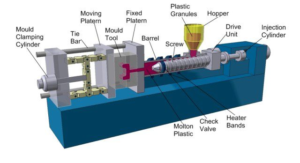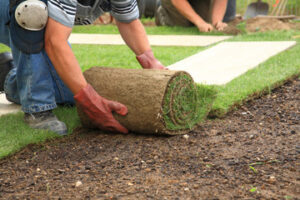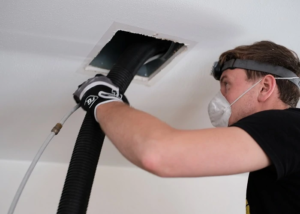Plumbers Orillia install and repair piping systems that deliver water, gas, and waste disposal in homes and businesses. This skilled trade requires an analytical mind, critical thinking skills, and physical strength to perform tasks like carpentry, digging trenches, and welding.

It also requires adherence to safety protocols when working with chemicals or in confined spaces. Read on to learn more about what it takes to be a plumber!
Plumbers install piping and fixtures in residential, commercial, and industrial buildings. This work requires precision and attention to detail, as well as the ability to read and interpret blueprints. Plumbers also ensure that their installations comply with local building codes. They may also be responsible for inspecting and testing plumbing systems to ensure that they are functioning properly. In addition, plumbers often handle customer service duties and interact with clients regularly.
While most people think of plumbers as someone who fixes leaky pipes or unclogs drains, this is just a small part of the job. These skilled professionals are also responsible for installing, repairing, and maintaining entire plumbing systems. They often work with a wide range of materials, including copper, steel, and plastic. They also use a variety of tools and techniques to solve problems like leaks, clogs, and water heater issues.
Some plumbers specialize in specific types of systems or structures. For example, some plumbers focus on residential plumbing, while others work on larger-scale projects, such as installing sewage systems or water treatment plants. In addition, some plumbers are experts in particular areas, such as gas lines or medical waste systems.
Plumbing is a trade that requires physical stamina and dexterity to maneuver large pipes and tools. Plumbers must also be able to follow detailed instructions and work independently. This is especially important when working on complex plumbing projects or when troubleshooting issues. Finally, plumbers must be comfortable using power tools and working in tight spaces.
Plumbing is an integral part of every home and business, and it’s essential that plumbers have the right skills and training to perform their jobs effectively. Not only can incorrect plumbing installation cause serious health and safety issues — such as scalding injuries and outbreaks of Legionella bacteria — but it can also lead to costly repairs down the road. Fortunately, plumbers can take steps to improve their chances of landing high-paying plumbing jobs. With continued education, career advancement opportunities, and a strong work ethic, plumbers can enjoy long careers in this rewarding industry.
Repair
When pipes get damaged or worn, plumbers can repair them to restore the functionality of the plumbing system. Some common repairs that plumbers make include fixing leaking faucets, toilets, and water heaters. They also fix clogged drains and sewer lines. Plumbers use a variety of tools and techniques to clear blocked drains, including manual rodding, hydro jetting, and chemical solutions. They can also replace or repair broken water heaters and install new ones if needed.
While most people think of plumbers as professionals who work in homes, many also employ their skills in commercial and industrial settings. These environments require plumbers to have additional training and experience working with larger-scale water systems. This includes installing, repairing, and maintaining plumbing equipment in office buildings, hospitals, factories, and other large spaces. Plumbers in these environments often collaborate with engineers, construction crews, and facility managers to ensure that all aspects of the plumbing system are working properly.
In addition to repairing existing fixtures, plumbers can also help prevent problems before they occur by performing regular inspections. These inspections can identify potential issues, such as a weakened water pipe, and allow for early repairs before they become major problems. Plumbers can also recommend upgrades or replacements to improve the efficiency of a plumbing system.
Plumbing emergencies can happen at any time, and when they do, they need to be dealt with immediately. This is why plumbers are available around the clock to respond to emergency calls. Plumbers can address leaky pipes, clogged drains, and other urgent issues that need to be fixed right away.
When it comes to emergency situations, plumbers can save the day by quickly addressing the problem and minimizing damage. Many plumbers have stories about saving a home owner from a disastrous flooding disaster or rescuing a homeowner who tried to tackle an extensive drainage issue on their own and made things worse. These are the types of jobs that earn plumbers a lot of respect from their peers and the general public.
Maintenance
While some of the most common duties for plumbers involve repairs and emergencies, they also play an important role in preventative maintenance. This includes conducting regular inspections of pipes and fixtures for signs of damage or impending problems, such as leaks or corrosion. They may also recommend upgrades or repairs to improve a system’s efficiency or safety.
Another way that plumbers keep buildings running smoothly is by ensuring that gas lines are properly installed and functioning. This requires knowledge of building codes and regulations, as well as expertise in a wide range of tools and materials. Plumbers also work with specialized equipment like gas meters and regulators.
Despite the many positive aspects of being a plumber, this job isn’t without its challenges. For example, working in tight spaces or with dangerous chemicals can be hazardous to your health. Likewise, the long training period can be physically demanding, and plumbing often involves working nights and weekends to respond to emergency calls.
Plumbers are responsible for installing and maintaining an intricate network of pipes that carry freshwater in and out of homes and businesses, and carry waste water away. This system is vital for maintaining healthy, comfortable living and working environments. Plumbers use their skills to inspect, repair, and maintain these complex systems, as well as install new appliances and fixtures like sinks, toilets, water heaters, and more.
Some plumbers specialize in commercial and industrial systems, which are larger in scale and require more specialized knowledge and equipment. These plumbers may also be responsible for maintaining heating and ventilation systems.
Leak detection is a crucial service offered by plumbers, as even a small leak can lead to extensive water damage and high utility bills. Experienced plumbers can detect and repair leaks quickly to minimize damage, while also using video camera inspections to evaluate sewer line conditions.
Plumbing is a highly skilled and respected profession that plays an important role in ensuring safe and reliable water and waste systems. While some stereotypes may suggest that plumbers are unskilled laborers, the truth is that this career offers a wide range of opportunities for those with the right skills and attitude. With continued training, plumbers can advance to master levels and even open their own businesses, allowing them to enjoy flexible hours and a sense of accomplishment.
Sales
In addition to fixing leaks and clearing clogs, plumbers can also help customers make the right choices for their homes and businesses. They can show them what options are available, including energy-efficient alternatives, and help them choose the best solutions for their needs and budgets. Having good sales skills is important for plumbers to have, as they can help them increase their income and grow their business.
The demand for plumbers is high. As new buildings are built and existing ones upgraded, there is always a need for skilled professionals who can install, repair, and maintain plumbing systems. Plumbers can find employment with plumbing companies, in construction firms, or as independent contractors. They can also choose to start their own plumbing businesses, which allows them more control over their work schedules and rates.
One of the most significant benefits of becoming a plumber is the job security it offers. The need for plumbing services will always exist, and as technology advances, there will be a growing demand for experts who can install and repair newer, more efficient systems. Plumbers can also choose to specialize in certain areas, such as water treatment or green plumbing practices.
Another advantage of being a plumber is that it is a highly respected career. Plumbers are needed to ensure that residential and commercial properties have functioning water and waste systems, which are essential for health and safety. In addition, many people feel that plumbers are necessary members of the community, as they provide a valuable service that helps to keep the economy running smoothly.
A career in plumbing can be rewarding both financially and emotionally. It is a hands-on, challenging position that can lead to many different opportunities for advancement and growth. Many young people assume that they must attend college to build a career, but there are many other ways that they can achieve their goals and make a difference in the world. A career in the trades, like plumbing, can be an excellent option for those who want to work with their hands and help others.








